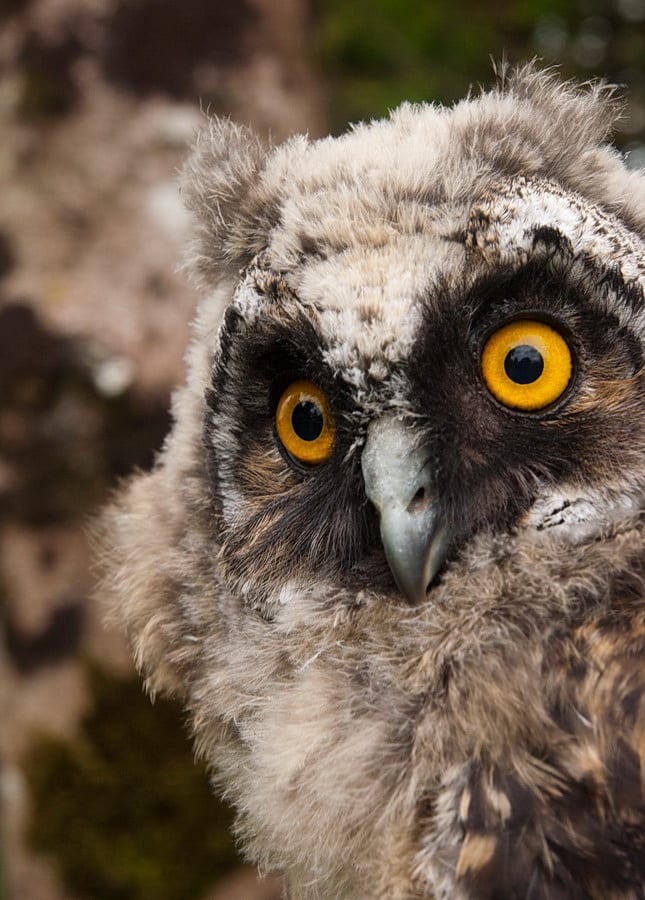BirdWatch Ireland are seeking records of Long-eared Owl chicks calling at night across the Irish countryside this summer.
On a calm summers evening, as dusk approaches and after dark, you might hear a faint screeching noise somewhere in the distance. This ‘rusty gate’ sound is the sound of hungry young Long-eared Owls begging for food, calling to their parents with a sharp squeaking whistle. Click here to hear what the call of young Long-eared Owls sounds like.
If you’re lucky enough to hear them calling this summer, or if you’ve seen an adult Long-Eared Owl coming and going to a possible nest site, please log your record via the link below – it only takes a minute! They’re widespread across Ireland but can be very secretive. However, the chicks tend to give away their location in late summer. The sound is usually audible in the late evening and night time. Long-eared Owls can be nesting in any sort of woodland or hedgerow with suitably mature trees, often in an old nest of a crow or pigeon. You might even be lucky enough to have them nesting in your garden.
** Click here to log your record **
Fluffy chicks will leap from tree branch to branch before they can properly fly. © John Lusby
These nocturnal hunters are incredibly well camouflaged, with dark shades of brown and beige in rich tawny plumage helping them blend in perfectly when sitting stoically still in a mature tree. Their bright orange or yellow-orange eyes are arguably their most striking feature, and despite their name the long erectile tufts on their head only serve a display function, so they aren’t actually ears! As with other owls and birds of prey, they’re vulnerable to changes in habitat that affect their prey base, and the common use of rodenticides to control rats and mice affect Long-eared Owls too.
The tufts on a Long-eared Owls head aren’t actually ears, despite the name!
The oldest Long-eared Owl in Ireland or the UK was nearly 13 years old, but most only live around 4 years. They often nest in the same areas year after year, so if you’ve heard them before then you might well hear them again this summer!
So, if you’re lucky enough to hear this ‘squeaky gate’ sound please log your record via the link below. Because they’re so secretive, they’re hard to monitor accurately, so any information you can provide will help us learn more about this mysterious species. This survey is kindly supported by The Community Foundation for Ireland as part of BirdWatch Ireland’s Birds Connect project. The project focuses on connecting people and birds through citizen science, outreach and training.
** Click here to log your Long-eared Owl record **
If you’re lucky enough to hear this ‘squeaky gate’ sound please log your record. © Dario Fernandez






